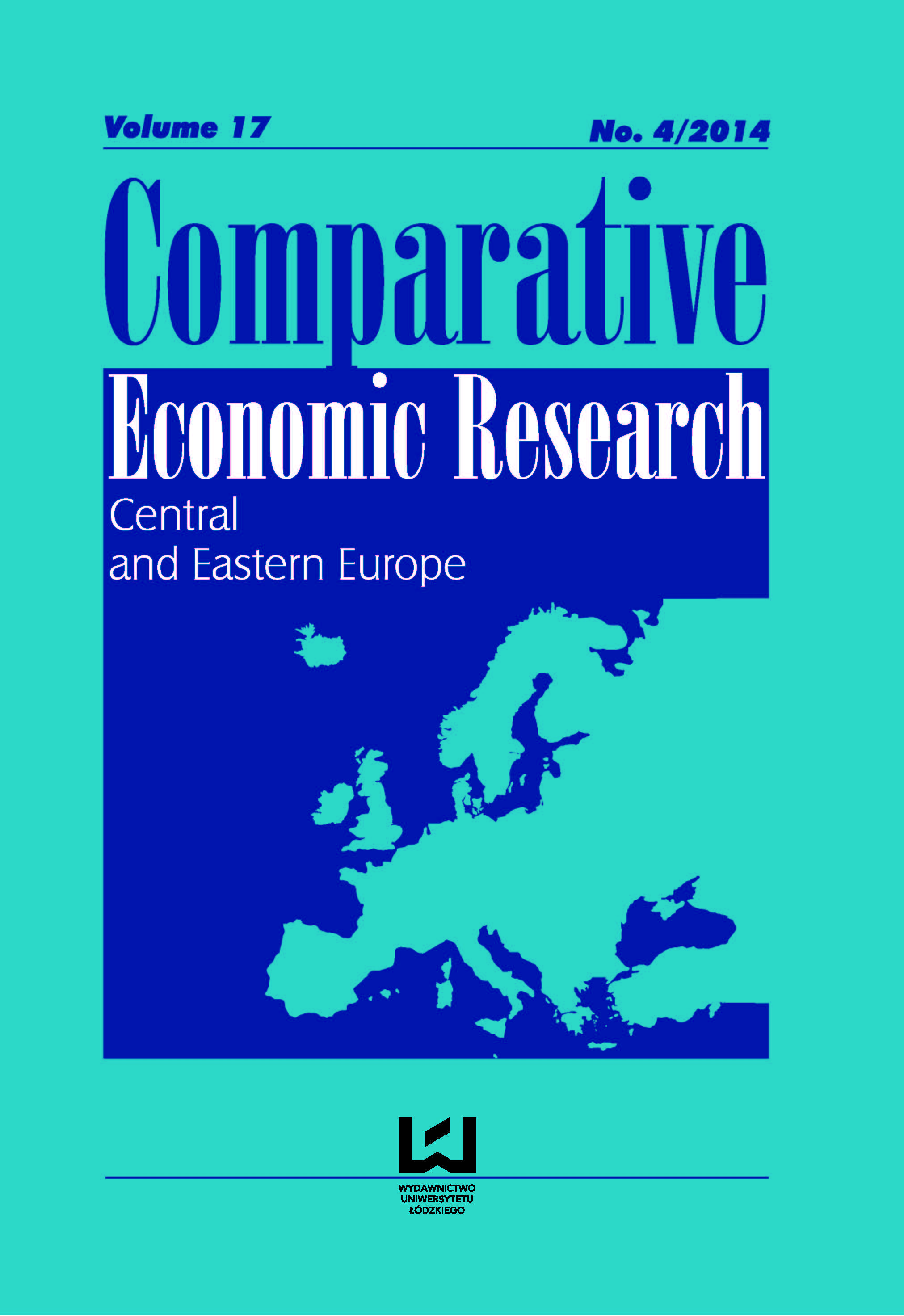Leaders And Followers In The Effectiveness Of Public Safety Services In European States – A Spatial Frontier Approach
DOI:
https://doi.org/10.2478/cer-2014-0044Keywords:
regional analysis, public safety, economics of crime, Data Envelopment Analysis (DEA)Abstract
Public safety is an important factor in both public and private life. Simultaneously it is one of the most regionally diverse sectors, due to historical, cultural, social, legal, and financial differences.Therefore, it is very difficult to compare public safety policies and facilities directly. However, assessment and comparison are crucial factors for defining the best practices and implementing the “learning-from-the-best” policy, which is important in the process of regional development and globalization. Fortunately some quantitative methods, such as DEA (Data Envelopment Analysis) enable this kind of research. DEA allows for analyzing relative effectiveness based on inputs and outputs, without incorporating procedural specifics of public safety. Therefore, the aim of this paper is to perform a regional analysis of the technical effectiveness of public safety systems in European states in 2003 and 2012 by utilizing an optimization method of DEA. Based on the results of this research countries are divided into two groups – effective and ineffective. Countries with effective systems are considered leaders. They present best practices which should be treated as benchmarks for the countries with ineffective systems, i.e. followers. In the research, inputs of the Data Envelopment Analysis consist of human and financial resources, as these are crucial for the functioning of public safety systems. The outputs are transformations of major crime categories. The analysis has been carried out for selected European countries in 2003 and 2012. This analysis indicates that among the countries with effective public safety systems are Finland, Norway, Romania and Poland.The worst technical efficiency could be observed in Belgium, the UK, Estonia, and Italy, which are underperforming and wasting a large proportion of their resources. This research indicates that despite many differences among states’ public safety policies, improvement and regional development can be stimulated and achieved by implementing the “learning-from-the-best” policy.
Downloads
References
Benson B.L., Zimmerman P.R (ed.) (2010) Handbook on the Economics of Crime, Edward Elgar Publishing.
Google Scholar
Charnes A., Cooper W., Rhodes A. (1978), Measuring the efficiency of decision making units, ʻEuropean Journal of Operations Researchʼ.
Google Scholar
Eide E., Rubin P.H., Mehlop Shepherd J. (2006), Economics of Crime, Now Publishers Inc.
Google Scholar
Eurostat Crime and criminal justice (crim) Reference Metadata in Euro SDMX Metadata Structure (ESMS) http://epp.eurostat.ec.europa.eu/cache/ITY_SDDS/EN/crim_esms.htm (03.06.2014).
Google Scholar
Compiling agency: Eurostat, the statistical office of the European Union.
Google Scholar
Gospodarowicz, M. (2000), Procedury analizy i oceny banków. [in] Materiały i studia NBP zeszyt nr 103, Narodowy Bank Polski Departament Analiz i Badań, Warszawa, pp. 48-51; Golany B., Roll Y. (1989) Anapplication procedure for DEA. OMEGA Heft Vol. 17, pp. 240-247.
Google Scholar
Galinienė B., Dzemydaitė G. (2012), Spatial Data Envelopment Analysis Method for the Evaluation of Regional Infrastructure Disparities, ʻSocial Technologiesʼ 2012, 2(2), p. 390-403.
Google Scholar
Gospodarowicz A. (2002), Analiza i ocena banków oraz ich oddziałów, Wydawnictwo Akademii Ekonomicznej im. Oskara Langego, Wrocław.
Google Scholar
Kourtit K., Nijkamp P. (2013), In search of creative champions in high-tech spaces: a spatial application of strategic performance management, ʻJournal of regional scienceʼ, vol. 53, no. 5, 2013, pp. 749-777.
Google Scholar
Ortmeier P. J. (1998), Public Safety and Security Administration, Gulf Professional Publishing.
Google Scholar
Seiford L.M., and Zhu J. (2003), Context-dependent Data Envelopment Analysis - Measuring attractiveness and progress, Omega, 31, 2003, pp. 397-408.
Google Scholar
Statystyki ogólne Policji: Postępowania wszczęte, przestępstwa stwierdzone i wykrywalność w latach 1999 - 2013 (2014) http://statystyka.policja.pl/st/ogolne-statystyki/47682,Postepowaniawszczete-przestepstwa-stwierdzone-i-wykrywalnosc-w-latach-1999-2013.html (04.05.2014).
Google Scholar
Suzuki S., Nijkamp P. (2011), A Stepwise Projection Data Envelopment Analysis for Public Transport Operations in Japan, Tinbergen Institute Discussion Paper, TI 2011-113/3.
Google Scholar
Downloads
Published
How to Cite
Issue
Section
License

This work is licensed under a Creative Commons Attribution-NonCommercial-NoDerivatives 4.0 International License.











